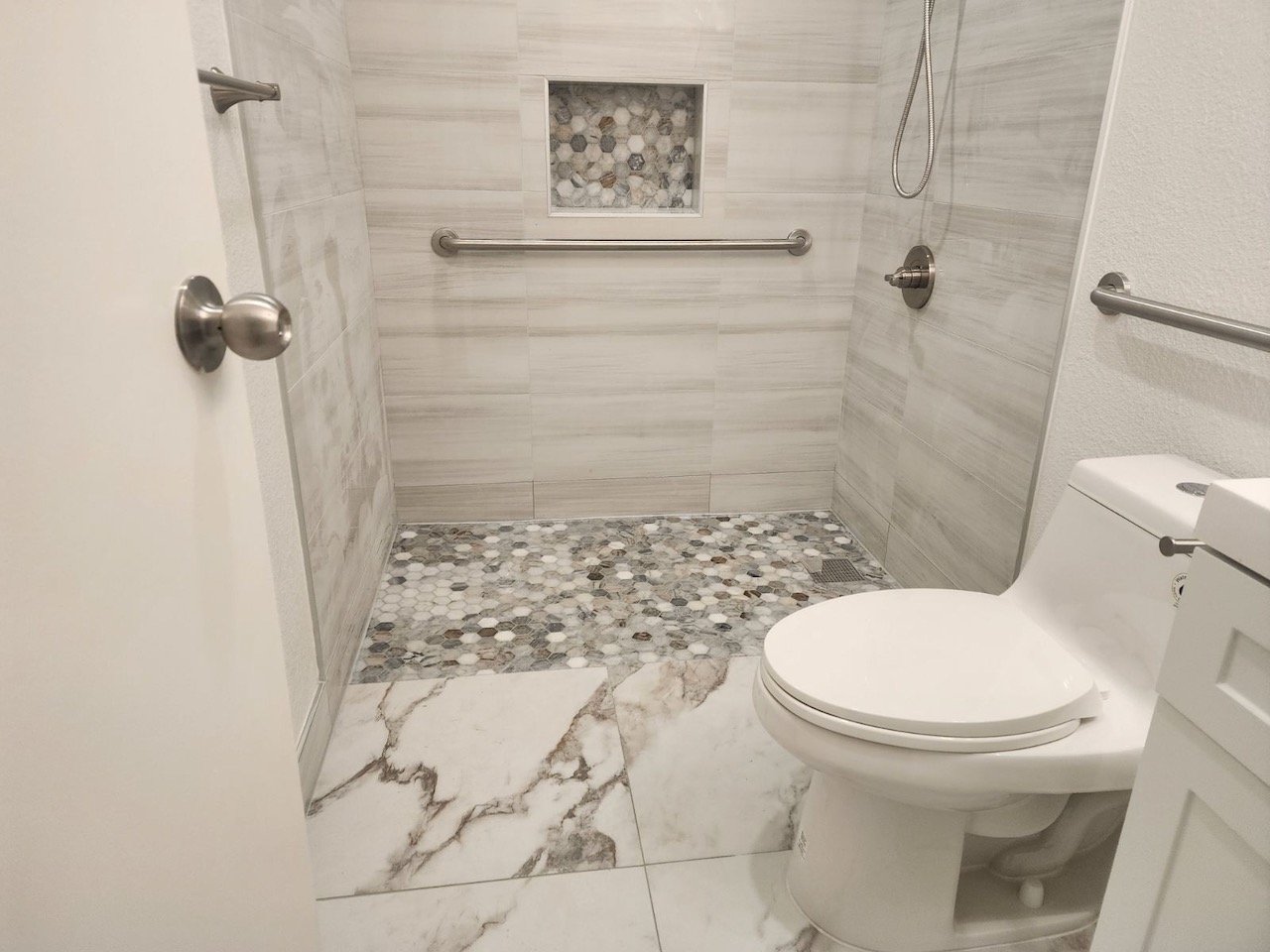Understanding R327: Aging-in-Place Design and Fall Protection
At ENE Smarthome, we specialize in integrating smart home technology and accessibility-focused construction to ensure that homes are not only functional but also future-ready. California’s new R327 Aging-in-Place Design and Fall Prevention requirements reinforce this mission by mandating critical safety measures in newly constructed homes. These updates ensure that homeowners—especially those planning to age in place—can benefit from designs that enhance safety, usability, and long-term comfort.
Let’s break down some of the key requirements and how ENE Smarthome ensures compliance:
1. Wider Interior Doors (R327.1.3)
What It Means:
Effective July 1, 2024, newly built homes must include at least one bedroom and one bathroom on the entry level with a minimum doorway width of 32 inches. If no bedroom or bathroom is located on the entry level, then a wider doorway must be provided on an upper floor.
Why It Matters:
For individuals using mobility aids, wider doorways provide essential accessibility and ease of movement. This requirement is particularly important in remodeling projects, where door widening can improve overall home functionality.
How ENE Smarthome Ensures Compliance:
We incorporate these wider doorways into all new construction projects.
During remodeling, we assess whether existing doorways can be expanded to meet future accessibility needs.
2. Grab Bar Reinforcements in Bathrooms (R327.1.1 & R327.1.1.1)
What It Means:
New homes must have structural reinforcements in bathroom walls to support future grab bar installations. These reinforcements must be included in at least one bathroom on the entry level, or an upper floor if no bathroom exists downstairs.
Why It Matters:
Falls in bathrooms are a common hazard, and having proper reinforcements in place ensures grab bars can be securely installed when needed, preventing injuries and reducing future remodeling costs.
How ENE Smarthome Ensures Compliance:
We install 2x8-inch nominal lumber or equivalent materials within wall structures to accommodate grab bar installations.
We provide documentation of grab bar reinforcement locations as part of the home’s operation and maintenance manual.
In remodeling projects, we proactively add reinforcements in high-risk areas like toilets, showers, and bathtubs.
3. Accessible Electrical Outlet & Switch Heights (R327.1.2)
What It Means:
All newly constructed homes must position electrical outlets, switches, and HVAC controls within an accessible height range—no higher than 48 inches and no lower than 15 inches from the floor.
Why It Matters:
This ensures that controls remain accessible to individuals using wheelchairs or those with limited mobility.
How ENE Smarthome Ensures Compliance:
We integrate this standard into every new construction project.
In remodels, we reposition outlets and switches to improve accessibility.
We incorporate smart home automation, allowing homeowners to control lights, HVAC, and security systems remotely through voice commands or mobile apps.
4. Lower Doorbell Heights for Accessibility (R327.1.4)
What It Means:
Doorbell buttons must be installed no higher than 48 inches from the exterior landing. If an integrated doorbell system is placed above this height, a secondary button must be available at an accessible level.
Why It Matters:
A doorbell positioned within easy reach improves home accessibility for individuals with mobility challenges.
How ENE Smarthome Ensures Compliance:
We install compliant doorbell systems at appropriate heights.
We offer smart video doorbells that provide additional convenience, allowing homeowners to see and communicate with visitors from anywhere.
Building for the Future
California’s R327 code is a significant step toward ensuring safer, more accessible homes. At ENE Smarthome, we proactively integrate these standards into our projects, helping homeowners future-proof their living spaces with advanced construction and smart technology solutions.
Whether you’re building a new home or remodeling, now is the time to incorporate these safety features to avoid costly modifications later.



